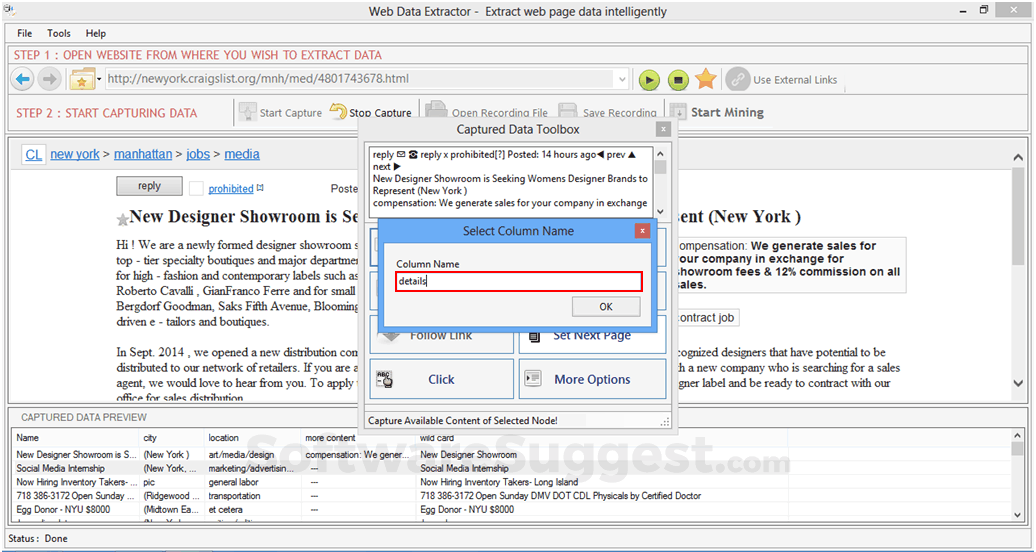

Run on virtual machines hosted in the cloud, such as Windows on Azure Virtual Machine (VM) and Windows on Amazon Elastic Compute Cloud (EC2). Connect to Cloud and Run in Cloud (Provisional)Ĭonnect to database instances hosted in the cloud, such as SQL Server on Azure Virtual Machine (VM), SQL Server on Amazon Elastic Compute Cloud (EC2), and SQL Server on Amazon Relational Database Service (RDS). Save extracted data to standard file formats (Excel, HTML, XML, delimited TXT, and SQL INSERT statements) for subsequent analysis and collaboration. View logs of all executed SQL queries to analyze and document past actions. Display the resulting data in a convenient grid. Selectively Execute SQL Queries to Retrieve DataĪssociate SQL files with data sources, specify SQL session options, and selectively execute SQL statements in the integrated environment to quickly manipulate database content. Improve queries by viewing the SQL query execution plan.
#DATA EXTRACTOR ONLINE CODE#
Apply and share custom SQL formatting profiles for consistent SQL code layout. Automatically format displayed SQL code for easy navigation. Validate SQL syntax and semantics in real-time to avoid parser violations and unresolved references. Prevent and fix common mistakes with SQL code quality markers. Select from a list of context-sensitive suggestions for object and function names, and automatically insert SQL statements from templates to avoid looking up, memorizing, and typing. Interactively Edit SQL CodeĮdit SQL code in the interactive development environment. Efficiently navigate databases with many objects. Manage database objects, including tables, constraints, indexes, views, procedures, functions, triggers, and packages. Navigate and search objects, create new objects, edit existing objects, execute context-sensitive commands, and browse outline views without SQL script.

Manipulate Database Objectsĭrill down into each database to display its objects and to inspect the structure of individual objects for quick visibility into databases. Drill down into the data sources to view registered databases on each server. Register data sources manually or semi-automatically.

Manage SQL Server and Oracle Data SourcesĬonnect to SQL Server and Oracle data sources from a single user interface.


 0 kommentar(er)
0 kommentar(er)
